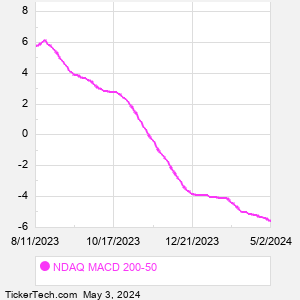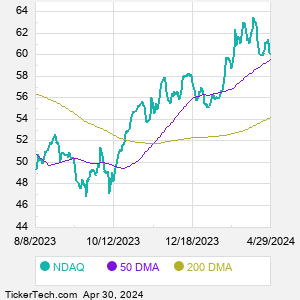Nasdaq is a holding company. Through its subsidiaries, Co. manages, operates and provides its products and services in four segments: Market Technology, which includes exchanges, clearing organizations, central securities depositories, regulators, banks, brokers and other businesses; Investment Intelligence, which includes its Market Data, Index, and Analytics businesses; Corporate Platforms, which includes its Listing Services and IR and Environmental, Social and Governance Services businesses; and Market Services, which includes its Equity Derivative Trading and Clearing, Cash Equity Trading, Fixed Income and Commodities Trading and Clearing and Trade Management Services businesses.
When researching a stock like Nasdaq OMX Group, many investors are the most familiar with Fundamental Analysis — looking at a company's balance sheet, earnings, revenues, and what's happening in that company's underlying business. Investors who use Fundamental Analysis to identify good stocks to buy or sell can also benefit from NDAQ Technical Analysis to help find a good entry or exit point. Technical Analysis is blind to the fundamentals and looks only at the trading data for NDAQ stock — the real life supply and demand for the stock over time — and examines that data in different ways. One of those ways is to calculate a Simpe Moving Average ("SMA") by looking back a certain number of days. One of the most popular "longer look-backs" is the NDAQ 200 day moving average ("NDAQ 200 DMA"), while one of the most popular "shorter look-backs" is the NDAQ 50 day moving average ("NDAQ 50 DMA"). A chart showing both of these popular moving averages is shown on this page for Nasdaq OMX Group. Comparing two moving averages against each other can be a useful visualization tool: by calculating the difference between the NDAQ 200 DMA and the NDAQ 50 DMA, we get a moving average convergence divergence indicator ("NDAQ MACD"). The NDAQ MACD chart, in conjunction with the chart of the moving averages, basically helps in visualizing how the moving averages are showing convergence (moving closer together), or divergence (moving farther apart). |



